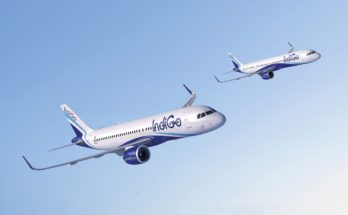
The business jet market continues to hover on the verge of recovery. A number of key indicators are trending upward, including economic growth, corporate profits, flight activity, and business and buyer confidence. By mid-2018, the inventory of used jets for sale on the secondary market had declined to its lowest level in more than a decade. Demand for new jets is growing from other types of fleet operations, such as on-demand charter, membership-based platforms, and the like.
Holding back a full recovery is global uncertainty in the face of current trade issues between the U.S. and Europe and China. Orders for Dassault’s Falcon business jet rose 10 percent in 2018, increasing to 42 from 38 orders the previous year. As for deliveries, only 41 Falcons were delivered in 2018, compared to 49 in 2015. While a recovery appears imminent, Dassault is taking it slowly and anticipates delivery of 45 Falcons in 2019.
As it seeks to maintain growth, Dassault Aviation has begun reinforcing its maintenance, repair and overhaul network. The company recently added two new operations to its MRO portfolio, ExecuJet and TAG Aviation. The addition of these two subsidiaries has diversified Dassault’s support services to include all types of jets in addition to the Falcon line.
Overall, Dassault concentrates its product line in the larger business jet classes. Several years ago, the company refreshed its line-up with the introduction of the Falcon 900EX and Falcon 2000EX extended-range versions. Later, new winglet-equipped versions of the 2000EX and 900EX (called the 2000LX and 900LX, respectively) replaced the EX versions in the company’s product line. In 2011, Dassault launched a super mid-size variant of the 2000LX, dubbed the Falcon 2000S. More recently, the improved-performance Falcon 2000LXS succeeded the 2000LX in the Dassault line-up.
In 2007, Dassault’s all-new Falcon 7X entered service. In May 2014, the company announced the Falcon 8X, a stretch version of the 7X. The all-new Falcon 6X was unveiled in February 2018, and deliveries will begin in 2022.
In military markets, the company’s Rafale fighter, currently in production for the French Air Force, continues to win export orders. The French government has ordered a total of 180 Rafales to date, of which approximately 152 were delivered through the end of 2018. Currently the government plans to defer deliveries of Rafales through the end of 2020. Deliveries of the remaining aircraft on order will restart in 2021, barring a change in plans.
Despite the French deferral, production will increase to meet the export demand, thus filling the gap at Dassault. An order of 24 aircraft for Egypt should be completed in 2019. This will be followed by a second export order for 24 aircraft from Qatar. Qatar ordered 12 more aircraft in December 2017. Deliveries of all 36 aircraft will wrap up around 2022.
Finally, India agreed to order 36 aircraft built in France in a government-to-government deal. Deliveries are forecast to take place in 2019-2021, but will likely be extended. Meanwhile, Dassault is throwing its hat into the ring yet again as India initiates a third competition to procure 110 fighters for the Indian Air Force.
The Rafale’s success, while a long time coming, is not a surprise considering the solid reputation of past Dassault aircraft in export service. Between the various Mirage fighters (2000, 5, 50, F1, III, and IV), there have been 26 national operators, with a current world inventory of 845 aircraft. It is no coincidence that India, Qatar, and Egypt are return customers to the Dassault fighter brand. And France’s reliable procurement of needed repair parts, maintenance, and upgrades has cemented a loyal customer base among those 26 national operators.
Nevertheless, export opportunities are diminishing for the aircraft. While not unexpected, the company did lose two long-shot competitions to supply Rafale fighters to Belgium and Canada. A competition in Switzerland is underway, with a selection expected in 2020.
However, France may continue to procure the aircraft to reach a requirement for 225 Rafales. An additional 45 aircraft beyond the 180 on order would allow it to replace legacy combat aircraft in its fleet. With the new Future Combat Air System program in the nascent stages of development, the French government is likely to continue to fund production of the aircraft through at least 2027.
A military history enthusiast, Richard began at Forecast International as editor of the World Weapons Weekly newsletter. As the Internet grew in importance as a research tool, he helped design the company's Forecast Intelligence Center and currently coordinates the EMarket Alert newsletters for clients. Richard also manages social media efforts, including two new blogs: Defense & Security Monitor, covering defense systems and international issues, and Flight Plan, which focuses on commercial aviation and space systems. For over 30 years, Richard has authored the Defense & Aerospace Companies, Volume I (North America) and Volume II (International) services. The two books provide detailed data on major aerospace and defense contractors. He also edits the International Contractors service, a database that tracks all the contractors involved in the programs covered in the FI library. More recently he was appointed Manager, Information Services Group (ISG), a new unit that encompasses developing outbound content for both Forecast International and Military Periscope.



